LANDSCAPES
Peninsula
Open Space Trust
Spring 2023


Peninsula
Spring 2023

As we head into the heart of spring, I find myself reflecting on how fortunate I am to live in the Bay Area. The views, sounds, wildlife and general wonder of nature reinforce my dedication to do something positive for our incredible landscapes and their wild inhabitants. We’re all interconnected in some way, and everything we do has a ripple effect.
The variety of plants and animals in our area is amazing, and each piece of land we protect — with the help of partners and your generous support — gives our region’s biodiversity a chance to truly thrive. At POST, this means working to create healthier landscapes for all of us in this great big ecosystem.
Last winter, POST helped preserve large swaths of land, which you’ll read about in this issue. A new easement on Camp Jones Gulch in La Honda preserves critical redwood habitat while ensuring ongoing operation of the beloved YMCA nature camp on the property. Many local residents — myself included — have watched their children experience a joyful rite of passage there.
POST also protected Estrada Ranch in the southern Santa Cruz Mountains, a spectacular property with varied habitats and working lands that have been responsibly managed by the Estrada family for
150 years. Both of these protection stories give me hope for our region’s climate resilience and the people and wildlife who live here. And we’re learning even more about that wildlife. We completed our study about connectivity in and around the southern Santa Cruz Mountains, and we’re pleased to share some key takeaways from it in this issue.
As the director of landscape conservation at POST, I look at the big picture: what our region needs, the benefits of land protection and restoration, and how everything and everyone can work together. I am so grateful for your support that allows me — and the entire POST team — to take these important steps to improve the health of this place we call home.
Warm regards,
 Irina Kogan Director of Landscape Conservation
Irina Kogan Director of Landscape Conservation
P.S. If you’re looking for ways to get involved, learn more about the Bay Area’s ecosystems or join a guided group hike, I encourage you to check out our events at OpenSpaceTrust.org/Events!

2 Estrada Ranch: A Legacy of Caring for the Land
6 Takeaways From Our Study: Where the Wild Things Move
10 Life-Shaping Experiences at Camp Jones Gulch
The land in POST's working area has been home to many distinct communities of Native people since time immemorial.
We work to conserve and care for these lands — the ancestral territory of at least four contemporary Indigenous communities: the Amah Mutsun Tribal Band, Muwekma Ohlone, Ramaytush Ohlone and Tamien Nation. These groups have survived centuries of oppression and displacement, and are the past, present and future caretakers of this land.

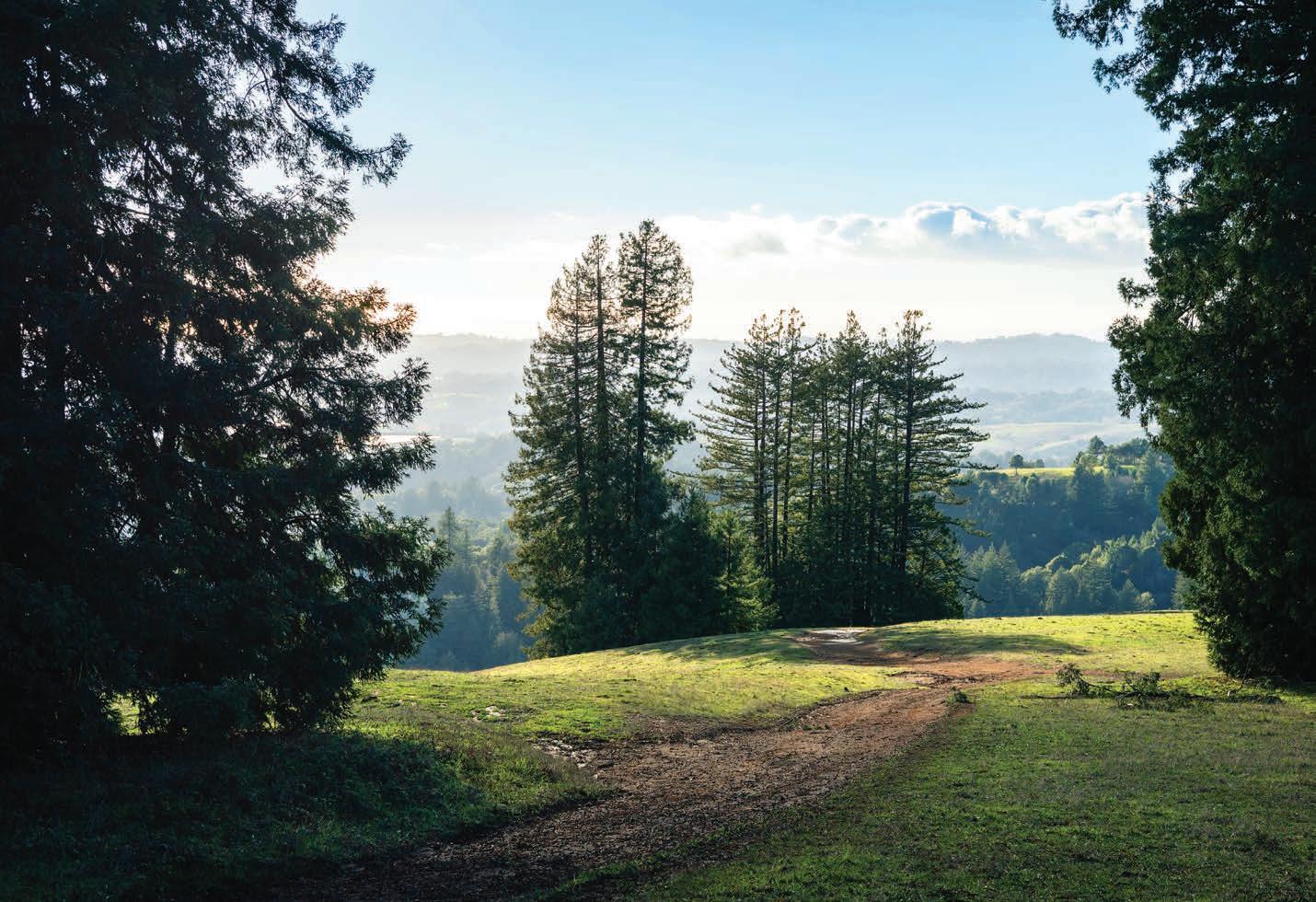 photos © Teddy Miller
photos © Teddy Miller
Late last year, POST protected 839 acres of a stunning property nestled in the southern Santa Cruz Mountains — Estrada Ranch. This landscape is truly impressive, featuring vital natural resources, sprawling grassland, towering redwood forests, essential wildlife habitat, productive working lands and incredible views.
Owned and very well maintained by the Estrada family for 150 years, the ranch has longstanding economic, historical and, of course, environmental values for its neighboring community — and for the region as a whole. Now that POST owns a major portion of the ranch, we’re working with the Estradas and the Land Trust of Santa Cruz County (LTSCC) to ensure that the entirety of the ranch is preserved forever.
The first phase is complete: POST has acquired a significant swath of land, protecting it from the threat of development and subdivision, and enabling the family’s legacy of sustainable timber production and cattle ranching to continue. In the future, LTSCC will lead efforts to secure a conservation easement over the whole ranch, which will eventually be sold back to the Estrada family. Together, we’ll carry out a solid plan to foster environmental resilience while benefiting land, people and wildlife across the region.

When POST purchases land, it usually needs significant restoration after years of neglect — active and adaptive management is key to a healthy landscape.
However, the Estradas have been model caretakers since the 1860s, working one of the last, large family-owned ranches in this region. They’ve demonstrated how private landowners can be dedicated, effective and responsible land managers. Properties like this can become subdivided — any legacies of stewardship lost forever. So, the conservation and care of Estrada Ranch is a gift to all of us.
In addition to grazing cattle, the Estradas have selectively harvested redwood trees through their partnership with Big Creek Lumber, all while maintaining the environmental integrity of the landscape. In return, the grasslands, forest and creeks have flourished, with lush vegetation providing habitat for many species.
This scenic property runs more than two miles along the ridge above Corralitos, and Mount Madonna County Park borders it to the northeast and south. So, preserving Estrada Ranch sets the stage for a contiguous protected landscape of more than 5,400 acres. This will ensure that local wildlife can traverse the Santa Cruz Mountains to the Gabilan Range, and to the Central Coast Range beyond. Such passageways significantly increase the odds that local fauna will make their way to find mates, shelter and food.
Other key habitats of the ranch include sensitive grasslands, maritime chaparral and wetlands. Its watersheds and streams allow steelhead and rare amphibians to thrive. The property’s steep terrain gives species a much-needed route to adapt to climate change as temperatures rise on the valley floor, and local creatures find respite at higher elevations.
LTSCC will work with POST and the Estrada family to develop the terms of a conservation easement. Of utmost importance: ensure that the entire property is permanently protected as conserved land under the Estrada family’s care.
With this in motion and the next generation of Estradas on board to lead the way, the family’s way of life will persist, as well as the joy and expertise they share with the Santa Cruz community. They have nurtured deep roots over the years by supporting local organizations such as the Ronald McDonald House and the Santa Cruz County Farm Bureau. They’re also passing down knowledge to future generations by teaching ranching and agriculture to neighboring youth.
We’re delighted to know that this landscape will continue to play a vital role in the fabric of our region, interweaving economic, social and environmental benefits for everyone.
Together, we’ll carry out a solid plan to foster environmental resilience while benefiting land, people and wildlife across the region.
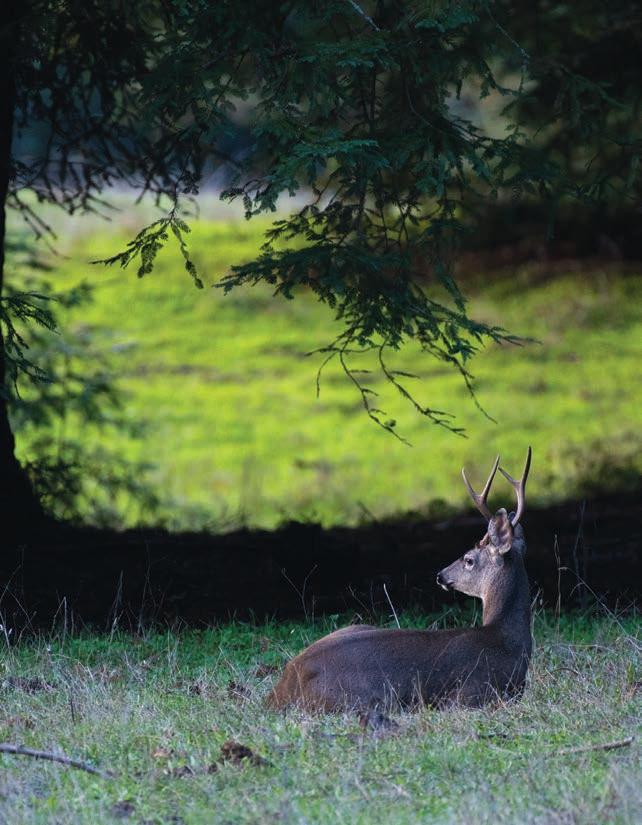
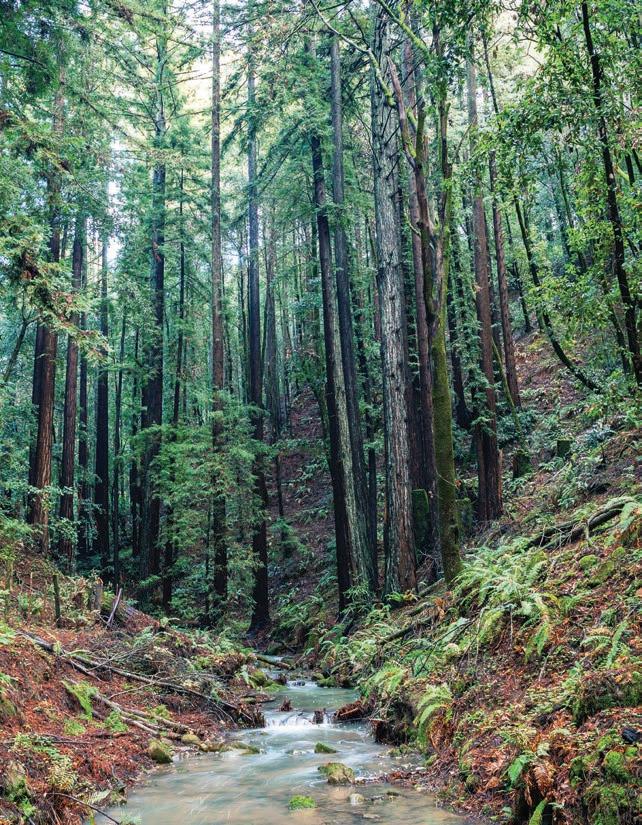
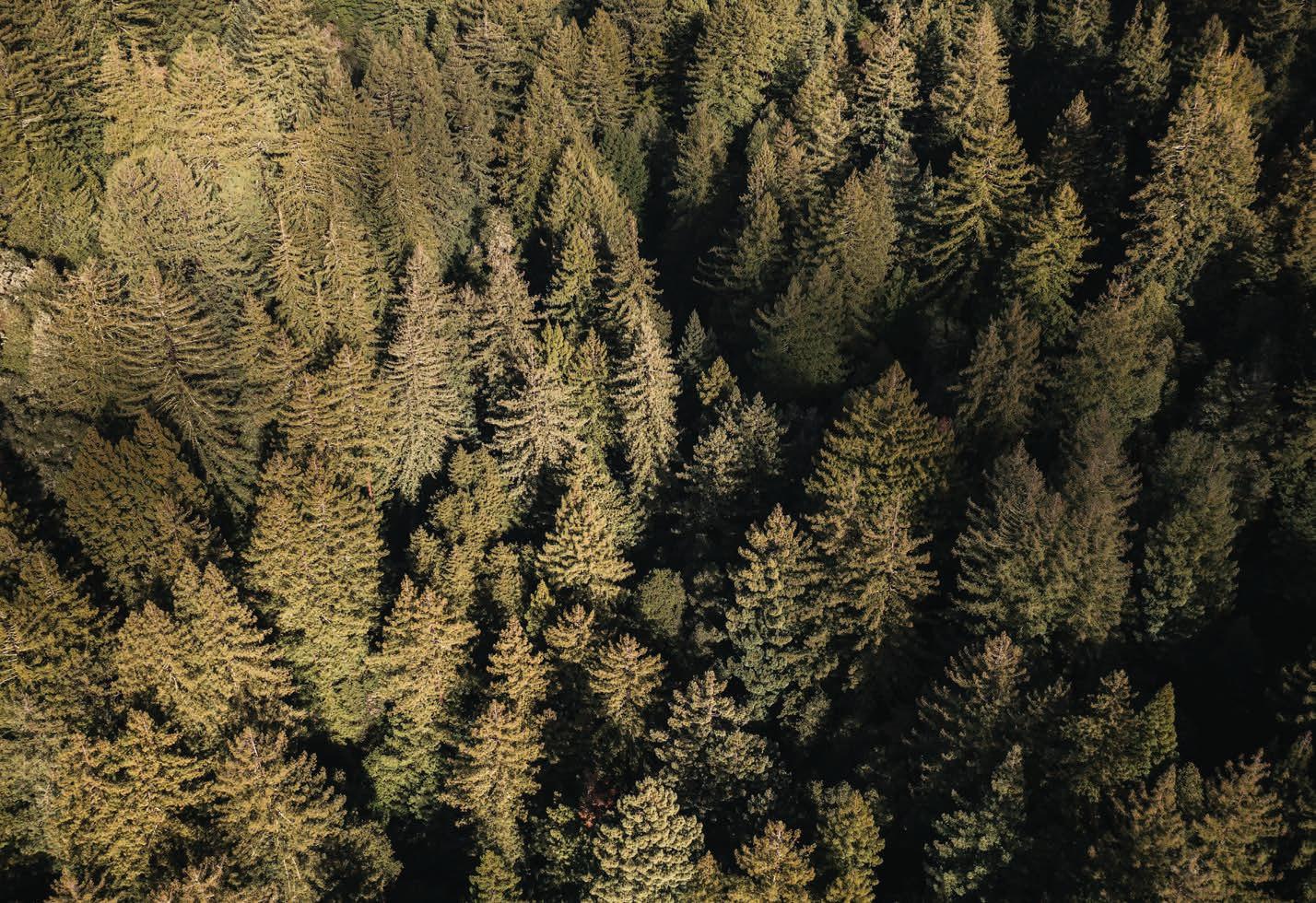
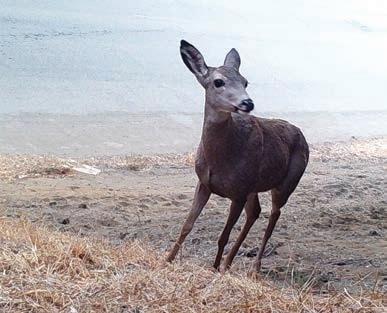

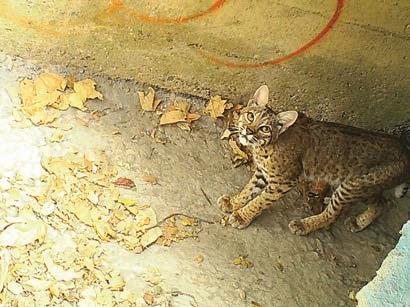
As you may know, we’ve been monitoring local wildlife to learn about where they are moving well across the landscape, and where they aren’t. Remember our beloved coyote and badger video? We captured the candid footage of this playful pair as part of our study — in partnership with Pathways for Wildlife — to better understand how animals make their way between local mountain ranges.
 Great blue heron
Bobcat
Black-tailed deer
Long-tailed weasel
Great blue heron
Bobcat
Black-tailed deer
Long-tailed weasel
When wildlife move freely between the ranges, they thrive.
These unlikely companions sparked our imaginations and warmed our hearts. We know that their presence here is key to our regional biodiversity.
The southern Santa Cruz Mountains, Gabilan Range and Diablo Range each provide critical habitat for local plants and animals. When wildlife can move freely between the ranges, they thrive. However, traveling throughout our populous region is no easy feat.

All across California, roads, vehicles and human development make safe passage between habitats a life-threatening challenge for animals looking for new territory, food and mates. If they become isolated, we face the possibility that some species might become locally extinct. This would have a profound impact, not only for individual creatures, but entire ecosystems. So, connecting and restoring fragmented habitats is a top priority.
KEY Priority sites for improving connectivity
For three years, POST has worked with Pathways for Wildlife — a research organization specializing in animal tracking and movement — to assess connectivity between the mountain ranges in Santa Clara, San Benito, Santa Cruz and Monterey Counties.



Our research focused on the major roads of this region. We paid special attention to the Aromas Hills and Upper Pajaro Valley, where the four counties and three mountain ranges converge. The goals: to understand where wildlife can currently travel safely via culverts (undercrossings beneath roads) and bridge underpasses, and to identify hotspots where animal and vehicle collisions happen most frequently. Our findings are already informing our work to improve transportation infrastructure, buy land in key locations, restore habitat and more. Here are just a few things we discovered.


At the 42 camera monitoring sites in the study area, a variety of species used existing undercrossings to move beneath highways. At the most frequented culvert, we saw 594 crossings by animals native to our region over the course the study!
Most sites within the study area (90%) allowed medium-sized mammals to travel through existing undercrossings, including American badgers, bobcats, coyotes, gray foxes, raccoons and striped skunks.
Only a quarter of existing undercrossings in the study area (26%) encouraged movement by larger mammals, such as black-tail deer. Though mountain lions were generally camera-shy, we found their tracks beneath one bridge.
Nearly all of the sites with high rates of animal passage are in the Upper Pajaro Valley. And this region was the only place where our cameras detected local badgers!
Of the ten sites with the fewest images of animals using crossings captured on camera, eight were in the Aromas Hills. This area also had a relatively high concentration of wildlife-vehicle collisions, including three involving mountain lions. It’s clear that better crossing structures are needed in this area, along US 101.
The study area is fragmented by roads, highways, rural residential development, agriculture and other forms of human development, making it difficult for mountain lions overall. The Aromas Hills region includes more suitable habitat for mountain lions than the Upper Pajaro Valley.
Creeks (particularly those with large undercrossings) are vital thoroughfares for several species, especially deer and bobcats, through the Upper Pajaro Valley.



The study found that 19 locations offer the most promising opportunities to reduce wildlife-vehicle collisions and improve wildlife movement throughout the region. These opportunities include protecting and restoring habitat, maintaining or improving existing culverts and bridge underpasses, and constructing new crossing structures in key locations where possible. These ambitious recommendations will take
years — and decades — to put in place, and we can’t do it alone. We’ll work with local partners to implement the study recommendations.
For more than 45 years, POST has focused our efforts on the Peninsula and the South Bay. Our keen understanding is that our projects will have impacts beyond our working area. This study confirmed our hunch that it’s important to expand our wildlife connectivity work even further south where the mountain ranges come together to connect northern California to the Central Coast, and east to the interior mountain ranges. Unless we take action, the Santa Cruz Mountains are at risk of becoming isolated — their stunning biodiversity is an asset we can’t afford to put on the line. We’re excited to explore the opportunities presented in the study and to build a more interconnected region so close to home.
Unless we take action, the Santa Cruz Mountains are at risk of becoming isolated.
In the Santa Cruz Mountains lies a well-known stretch of redwood forest called Camp Jones Gulch. Home to a beloved YMCA camp, many Bay Area residents credit this landscape with sparking their passion for the outdoors and science as kids. For over 80 years, this site has welcomed young learners to discover nature and play in its shaded expanse.
Beyond the immense value it holds for local people, this land is home to over 40 species of plants and animals, including the Valley of the Giants, one of the largest unprotected stands of old-growth redwoods in our area. Diverse flora, fauna and fungi inhabit the wide expanse of forests and woodlands, as well as the Jones Gulch and McCormick creeks. Located in the Pescadero watershed, these creeks are crucial for endangered coho salmon and threatened steelhead trout.
Recently, we supported our colleagues at Sempervirens Fund to permanently protect these vital and beautiful 920 acres. With $2 million in funding from POST, our partners bought a conservation easement that ensures that Camp Jones Gulch will continue to be full of natural resources and provide us with a nature-based playground forever.


Also, this property is an important piece of the wildlife connectivity puzzle. Sitting alongside neighboring Pescadero Creek and Sam McDonald County Parks, it connects over 10,000 acres of habitat for species like marbled murrelets, San Francisco dusky-footed woodrats, California red-legged frogs and many others.
What’s more, generations of local youngsters will continue to benefit from an immersive experience in the great outdoors, receiving science education and walking away with incredible memories.


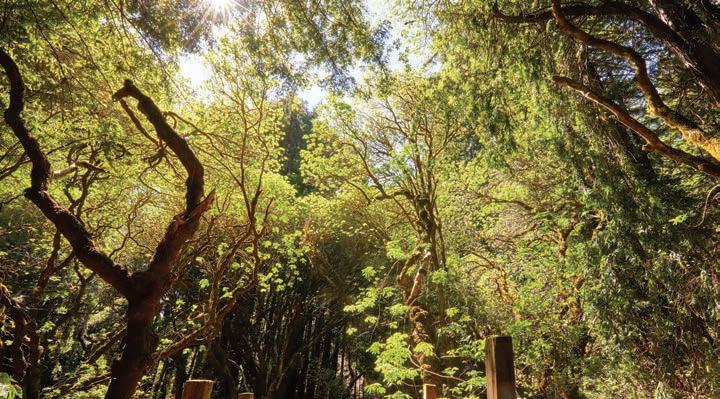
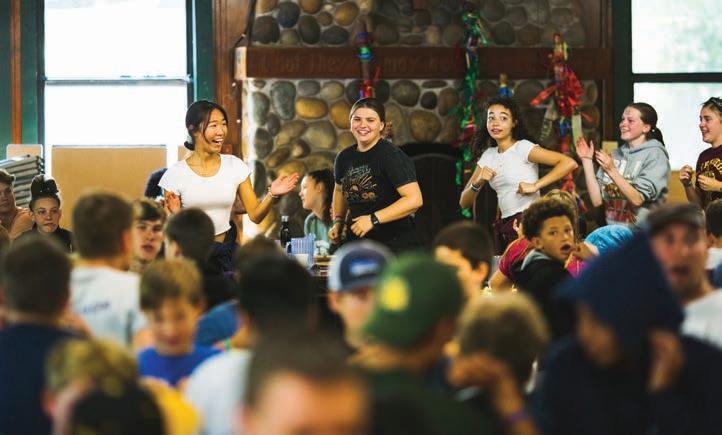
For nearly a century, local youth have attended YMCA education programs under the property’s towering redwood sentinels. Since 1968, students from San Mateo County schools have spent an energizing, action-packed week at Camp Jones Gulch for sleepaway camp. This is how POST’s very own Senior Philanthropy Officer Megan Derhammer first became acquainted with the place. She looks back fondly on her outdoor education experience:

“Like many others who grew up in the Bay Area, an exciting milestone of my childhood was going to the Jones Gulch YMCA Camp in sixth grade. I still remember the songs we sang and the cabin I was in: The Herons. While on the night hike, I saw my first-ever shooting star. I learned to make face paint by mixing creek water with ash from a burnt redwood. I even became a member of the ‘Banana Slug Club’ by kissing one! It was an unforgettable experience, and it shaped me in ways I couldn’t have then predicted.”
A few decades later, Megan often finds herself chatting with colleagues and donors who also made memories at the camp, or whose kids did.
“Whenever the topic arises, everyone lights up! For many kids — myself included — the experience is life-changing. When I started my career in conservation nonprofits, I reached out to one of the camp directors
“This type of outdoor education program is crucial to inspire the next generation of environmental stewards and conservationists.”
who I was also fortunate to have as a teacher one year. I said: ‘Remember me? I’m a Jones Gulch alumni and your former student, and now I’m working to save the redwoods!’”
Recently, Megan chaperoned a field trip to Camp Jones Gulch with her son’s elementary school. She found herself reflecting on how awe-inspiring it was to go full circle and re-experience the joy as a parent.
“For many young campers, Camp Jones Gulch represents a first-ever immersive experience in nature. This type of outdoor education program is crucial to inspire the next generation of environmental stewards and conservationists. It’s so meaningful to use our open spaces to create character-building moments for kids — and they’re more inclined to respect nature after forming an emotional connection to it!”
Having recovered from heavy timber harvesting in the late 1800s and early 1900s, Camp Jones Gulch has truly found its niche. It’s both a spectacular protected landscape in the heart of the Santa Cruz Mountains, and a hands-on learning environment that many Bay Area residents hold dear. Now we can rest easy knowing its rightful place in our landscape is forever secure. Camp Jones Gulch will continue to provide a home for diverse wildlife, as well as incredible outdoor educational experiences for our area’s youth.
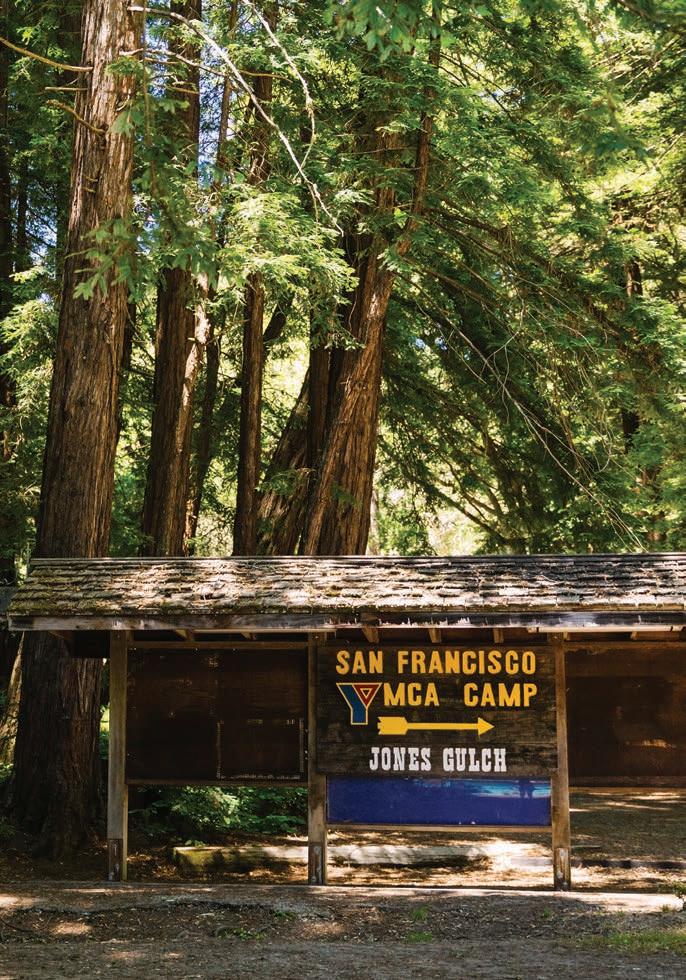
and together, we are creating a resilient future. Your support helps us protect wildlife habitat, make regional trail connections and care for our spectacular landscapes.

Make an impact with a gift of stock or a distribution from your donor-advised fund. And increase your impact with your company's matching gift.
Support our future work with a legacy gift in your trust or IRA. Commitments like these will help POST continue our work for decades to come!
Learn more at OpenSpaceTrust.org/Give or call us at (650) 352-6312.
POST Tax ID Number: 94-2392007